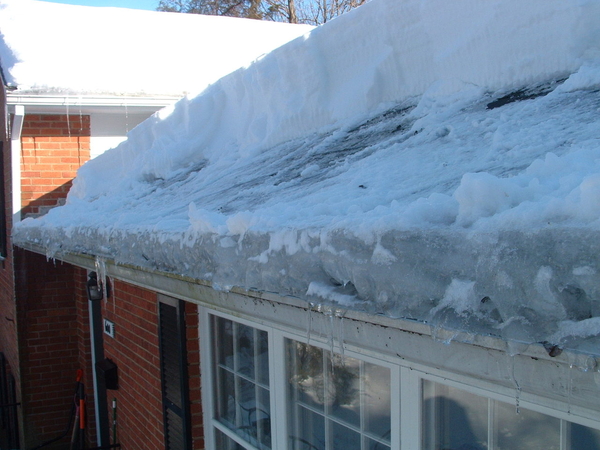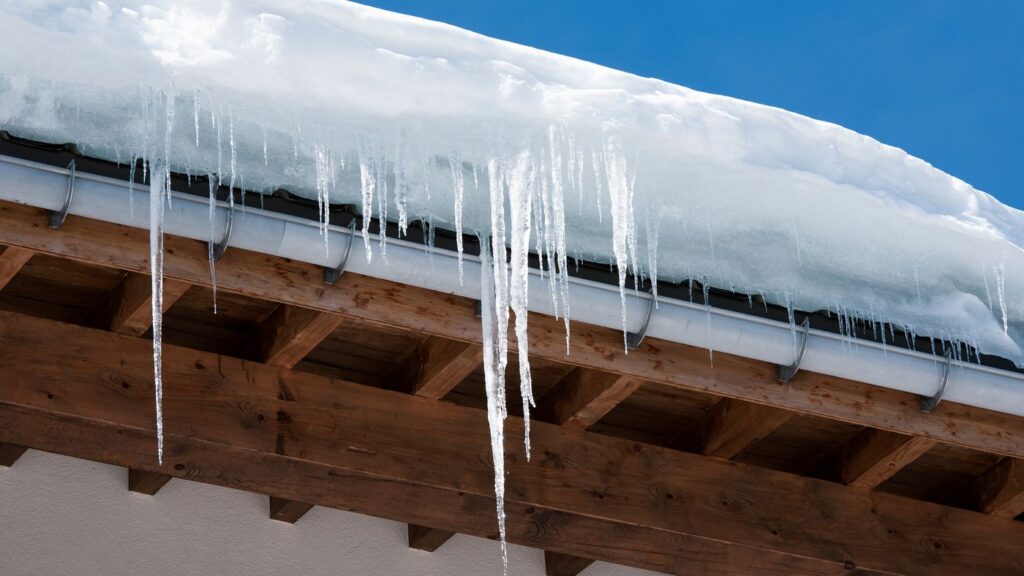How To Avoid Roof Ice Dams
Those who live in cold weather areas should take precautions to prevent ice dam formation in their homes. Gutter medics can help you with removing some snow on your roof. It’s not easy to remove some snow especially if you live alone.
As a result of roof ice and debris clogging gutters, roof ice dams form. The ice inside a gutter traps water from rain or melting heavy snow from the roof as it runs down the roof rake that causes a wet snow load. The shingles and the in the gutter trap water flowing toward them.
If a runoff is not directed somewhere else, water may move back and beneath roof shingles. When water is allowed to travel underneath the shingles, it will undergo a series of freeze-thaw cycles for a long period of time. Water will create wood rot and roof deck damage relatively quickly under roof shingles if it remains under the shingles.
Ice Dam Can Cause Water Damage To Your Home That Is Costly To Fix.
Want to prevent the formation of roof ice dams? When building or re-roofing your home, prevent ice dams by following these steps:
Step 1.
If you are installing a new roof, be sure to install quality ice and water barriers beyond the first exterior wall (or within the first 3 feet if you are replacing an existing roof). Water and ice barriers may need to be installed six feet deep or more on lower pitched roofs. In most Wisconsin municipalities, the ice and water barrier must extend two (2) feet above the interior wall from any roof eave. Soffits (overhangs) on most roofs are less than a foot wide.
Rolls measuring three (3) feet wide can meet the minimum building code requirements. When estimating roofing work, experts typically include one row of ice and water barriers (the first 3 feet). There may be times when more than one row of ice and water barriers are necessary when your soffit is wide. Make sure you know what your city’s minimum roofing regulations are.
It should be remembered that these are merely “minimum” building codes. It is generally better to have a greater amount of coverage here than with traditional tar paper, but this is quite an expensive building material. The costs and benefits of exceeding the minimum building code must be considered before going beyond it.
Step 2
It is important to make sure that your gutters and downspouts can handle all the rainwater runoff from your roof. Depending on the size of your roof, most contractors can calculate how much capacity you need for gutters. Gutters with a larger water capacity are needed for larger roofs. The cost of custom seamless gutters is a little bit higher than that of prefabricated gutters, however, they are both durable and maintenance-free. Keep downspouts clear and the foundation of your house away from water.
Step 3
Balance intake vents (such as soffit vents) with exhaust vents (such as ridge vents or box vents) in the roof eaves. Directly beneath the roof deck, there must be a balanced number of cold and warm air intake vents. A properly functioning system involves incoming cold air entering intake vents and pulling warm air from the attic through exhaust vents. The attic living space becomes trapped with warm air if it is not properly ventilated. The amount of snow standing on the roof will melt when this warm air blows over it. At the same time, ice melt may be frozen into ice, continuing the freeze-thaw cycle.
Have any questions about our gutter medics services? Read our FAQ Section.

If You Are Interested In Preventing Or Removing Ice Dams On Your Existing Roof, You Can Follow The Steps Below:
Regularly Clean And Maintain Your Gutters And Downspouts
If your roof is in need of repair, make sure you have a free flow of water off it. Clogged downspouts and frozen gutters are too late once the water freezes in them. Having gutter guards installed is an excellent investment since they save you time and reduce clogs.
Install Heated Cables In Areas Where Ice Dams Occur Or Form Frequently.
Heating elements attached to the eaves and gutters of your roof ice can be obtained readily, as well as heated roof cables. Ice can be prevented from forming by using these cables. Install additional insulation in attic spaces to prevent warm air from the house from escaping into the attic and warming the roof.
Determine How Many Attic Ventilation Systems There Are In The Attic Area.
The ventilation needs to be increased in attics with less than 1 square foot of vent space per 300 square feet of floor area. 50% intake and 50% exhaust ventilation should be struck in a balanced manner.
As simple as cleaning your gutters regularly, you can prevent the damage ice dams cause. In the event you have frequent removing roof ice dams or are incapable of doing it yourself, call a reputable, local roofing contractor for assistance.
Looking for a company that offers roof ice dams removal? Gutter Medics can assist you. Contact Us Today! (630) 922-3131

